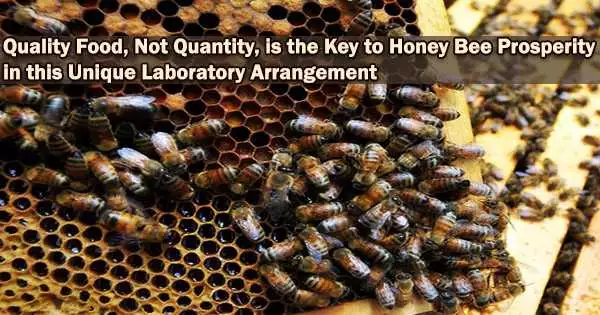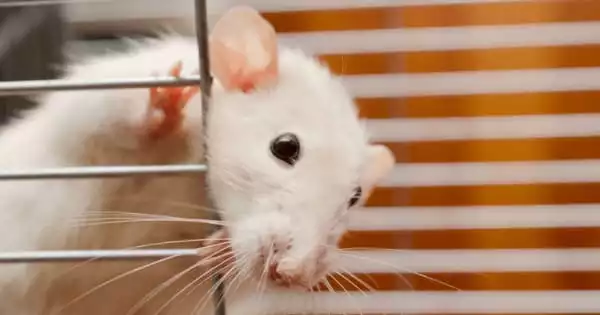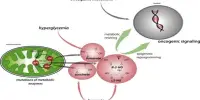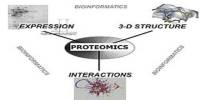Workers of honey bees gather pollen and nectar from various flowering plants to utilize as sustenance. Honey bees normally travel between 1-2 miles from the hive to forage, though occasionally they go up to 10 miles. However, the majority of the contemporary environment is made up of farmland, which restricts the amount of foraging opportunities for honey bees in these regions.
The question of how agricultural landscapes affect the type of food the honey bees bring in and whether this food then affects the queen’s production of eggs is raised by the fact that honey bee populations in areas with a high concentration of corn-soy crops suffer enormous losses when crops decline at the end of the summer.
Adam Dolezal (IGOH), an assistant professor of entomology at University of Illinois Urbana-Champaign, and Ashley St. Clair, a postdoctoral researcher in Dolezal’s lab, explored these questions in a new paper published in Frontiers in Sustainable Food Systems.
Their study involved two components. In the first, honey bee colonies were scattered across various agricultural and wildflower prairie environments, and the species and quantity of pollen they collected, along with the number of eggs the queen laid, were all measured.
The amount of pollen did not differ between locations near crop fields and those near prairies, but the type of pollen differed, with the main difference being that honey bees near prairies gathered more evening primrose pollen than honey bees near crop fields.
The results indicate that it’s the quality of the pollen that matters more than the quantity that they’re bringing in. There are specific pollens, like evening primrose, that when mixed in can be more nutritious overall. However, in the lab, primrose did not provide enough nutrition by itself to change the queen’s fecundity. So, the take home here is that the honey bees need a diverse diet.
Ashley St. Clair
Additionally, in late summer when crop availability declines, queens from colonies located closer to prairie laid more eggs than those from colonies located near crop fields. St. Clair explained that this result did vary a bit year by year, because field experiments with honey bees have so many variables to account for.
“It’s very complicated in the field to tease apart these differences. I mean, it could be corn, pesticides, the randomness in the colonies…It could be all kinds of interactions,” said St. Clair. “We wanted to see if we could replicate those findings in the lab because it would mean that pollen nutrition was actually an indicator of that reduced queen egg laying we see in August, and not some other environmental factor.”
The second portion of the study replicated a field experiment by using tiny microcolony honey bee boxes to determine if dietary influences on egg laying in a controlled laboratory setting for the first time. Two transparent parts of the cage snap together to form a 264-well injection-molded honeycomb plate that serves as the bees’ food storage and egg-laying area. There is a trough at the bottom that the worker bees can use to collect food, but the queen cannot use it.
The cages were originally designed by IGB Director Gene Robinson’s (GNDP) lab, to be used for automated beekeeping. However, St. Clair and Dolezal discovered they were an excellent way to house multiple colonies together in a laboratory setting, with each colony holding about 60-100 honey bees.
The colonies were fed one of three treatment diets that resembled the dietary mixtures found in the study’s field component: crop mixture, prairie mixture, or 100% evening primrose. The latter was added to determine whether the honey bees’ preference for evening primrose as a pollen source in the field was due to its nutritional value. The amount of eggs that each colony’s queen had laid each day was then recorded by the researchers.
According to what was seen in the field, queens produced more eggs while on the prairie diet than while on the crop or primrose diet. The findings from the study’s field and laboratory components indicate that honey bee colonies perform better when fed a varied diet, like what they might find in a field of prairie flowers, as opposed to a less varied diet of crops.
“The results indicate that it’s the quality of the pollen that matters more than the quantity that they’re bringing in,” St. Clair said. “There are specific pollens, like evening primrose, that when mixed in can be more nutritious overall. However, in the lab, primrose did not provide enough nutrition by itself to change the queen’s fecundity. So, the take home here is that the honey bees need a diverse diet.”
So, what can farmers and/or beekeepers do to help honey bees through the shortage of food in August? According to the study, prairie strips, which are already used by farmers for various purposes, have the extra benefit of benefiting honey bees.
Farmers can lessen erosion and water loss on their fields while also giving honey bees another food source by planting native prairie plant strips along waterways and farm margins. Additionally, researchers can make better recommendations on what kinds of prairie plants to supply on the strips thanks to laboratory experiments like this one.
“This is a new way of thinking about what we’re measuring in these colonies,” said Dolezal. “Being able to see that when you have this or that on your landscape, your queens are more productive, is really valuable.”
The following phases of the research will concentrate on pesticide exposure and interactions with pollen on queen fertility, and the team plans to use the microcolony cage technique. Pesticides pose a significant threat to bees as a whole, yet it can be challenging to investigate their precise impacts in such unreliable field conditions. Dolezal said that this laboratory microcolony system offers a great controlled environment for further research into these issues.
“There’s a lot you can do with this system, and coming from someone who has been doing work in the field, this is like magic,” Dolezal said. “This laboratory system will allow us to conduct manipulative experiments and look very finely at what’s going on in the honey bee colonies.”
















